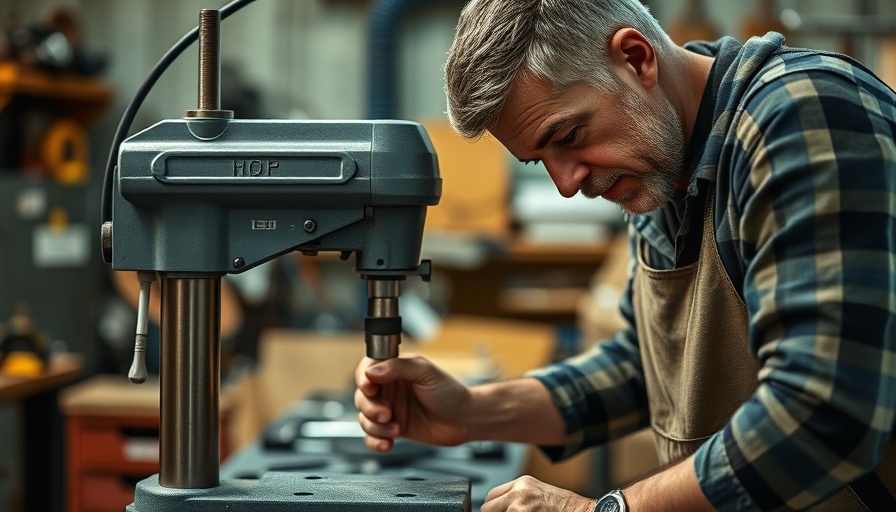
Why Metal Stamping is Essential for Modern Power Tools
For homeowners in London embracing DIY projects, understanding the intricacies of the tools you use can profoundly enhance your experience. Metal stamping is more than just a production process; it’s pivotal to the performance and durability of power tools and construction equipment. These tools are designed to withstand significant wear, and metal stamping ensures that every component is robust, precise, and reliable.
What is Metal Stamping?
At its core, metal stamping is the process of using dies and stamping presses to convert flat metal sheets into specific shapes. This technique yields high-quality, repeatable parts—such as brackets, housings, and fasteners—that are essential in a wide array of power tools. For example, jackhammers and angle grinders rely heavily on these stamped parts for functionality and safety.
Precision and Performance: A Homeowner's Perspective
Diving into the world of DIY home improvement, the importance of precision in metal parts becomes clear. Imagine using a power tool where every screw or lever is crafted with exactitude, allowing for seamless operation. The tight tolerances achieved through metal stamping reduce the risk of malfunction, enabling tools to perform consistently during your home projects.
Durability Meets Combatting the Elements
As a London homeowner, you know that British weather can be unpredictable. Tools exposed to moisture and debris need to be durable. Stamped metal parts are made from various high-strength metals like stainless steel and aluminum alloys, ensuring they can withstand the elements while also being lightweight and easy to handle. This adaptability is crucial for DIY enthusiasts who wish to tackle projects in varying conditions.
Eco-Conscious Choices in Metal Stamping
Incorporating sustainable practices is essential for today's conscious consumer. Fortunately, metal stamping aligns with eco-friendly practices. The manufacturing process is designed to be efficient, often resulting in less waste compared to other manufacturing methods. This aspect resonates with the environmentally-minded homeowner who is looking to minimize their ecological footprint while still achieving high-quality results in their projects.
The Future of Power Tools: Smart Integration
With advancements in technology, power tools are becoming more integrated with smart home systems. Components manufactured through metal stamping can be designed to accommodate new technologies seamlessly. As someone invested in building a smart home, you’ll appreciate how metal stamping is paving the way for innovations that enhance user experience and tool functionality.
Wrapping Up: Why Knowledge Matters
As you embark on your next home improvement project, understanding the importance of metal stamping can empower your DIY efforts. Choosing the right tools not only influences productivity but also enriches your overall experience. High-quality, stamped components lead to safer, more reliable, and more durable tools that you can confidently incorporate into your home improvement toolkit.
If you’re looking for more insights and tips on home improvement and sustainable living, explore local news and community updates. Engage with your neighbors and discover grassroots initiatives that celebrate community spirit and resourcefulness.
 Add Row
Add Row  Add
Add 




Write A Comment